I’ve analyzed thousands of pages from 50 research reports and found surprising shifts in how leading companies are building the future—changes that go far beyond AI and automation.
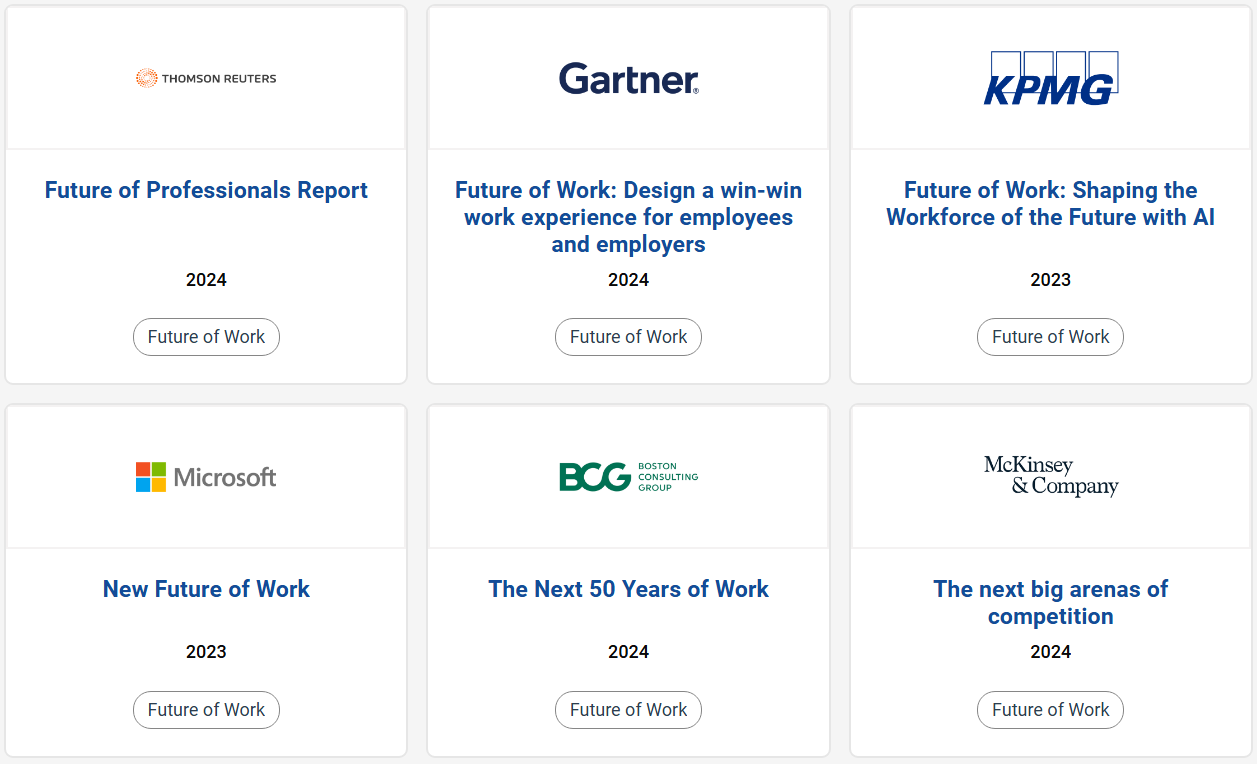
Five shifts stand out from the research:
More transparency often reduces trust rather than builds it
Job security has become the top priority despite record-low unemployment
Organizations with multiple cultures outperform those with strong unified cultures
Social capital matters more than technical skills for long-term success
The workforce balance sheet is becoming as crucial as the financial one
Let's examine each one and more.
The Human Core of Organizational Change
The Authenticity Paradox
The research exposes a telling disconnect that few organizations are willing to acknowledge. According to the Harvard Business Publishing Corporate Learning survey, almost 60% of senior leaders believe they've created cultures of authentic leadership. Still, less than half of their employees share this view.
This disconnect reveals a deeper paradox. When leaders attempt to build trust through increased transparency, they often achieve the opposite effect. Simply sharing more information leads to:
Information overload and anxiety
Reduced creativity and innovation
Eroded trust and psychological safety
Growing concerns about surveillance
Successful organizations take a fundamentally different approach. Instead of pursuing transparency for its own sake, they create structured systems that give employees agency:
Implementing "opt-in" data sharing where employees control their visibility
Building clear channels for challenging decisions without fear of repercussion
Establishing guidelines for what information is shared and why
Focusing on enabling better decisions rather than enforcing compliance
Measuring psychological safety through behavior, not declarations
This shift from "maximum transparency" to "responsible transparency" marks a key difference between organizations that build genuine trust and those that inadvertently damage it.
The Human Sustainability
Perhaps the most profound shift emerging from the research is the concept of "human sustainability." This goes far beyond traditional wellness programs or work-life balance initiatives. It represents a pivot from extracting value from people to creating value for them.
What makes this shift particularly noteworthy is its impact on business performance. Organizations that have embraced true human sustainability report:
Higher innovation than their peers
Significantly lower turnover in key positions
Stronger financial performance over extended periods
Greater resilience during market disruptions
The key lies in how these organizations approach human sustainability:
They integrate fair compensation, meaningful challenges, and growth opportunities into core business operations.
They build environments where belonging isn't just talked about but systematically supported.
They create conditions where employees can maintain long-term performance without burnout.
The New Security Paradigm
The research reveals a counterintuitive trend in worker priorities. Despite record-low unemployment and high job vacancies, job security has become workers' most sought-after preference globally.
Today's workers aren't seeking lifetime employment guarantees. Instead, they're pursuing what might be called "adaptive security," the ability to remain valuable regardless of organizational or technological changes. This shift is driven by:
Accelerating industry restructuring
Growing geopolitical uncertainties
The visible impact of technological disruption
Clear evidence that traditional career paths are disappearing
As organizations respond to these human realities, they're discovering that traditional structures no longer serve. The most successful organizations are evolving into something quite different.
The New Organizational DNA
The Rise of Microcultures
One of the most unexpected findings challenges the idea of a monolithic corporate culture, which is a cornerstone of traditional management thinking. The research shows that attempts to maintain a single, uniform culture across an organization often stifle innovation and reduce adaptability.
Instead, leading organizations are intentionally cultivating multiple, distinct microcultures. These aren't departmental silos but dynamic communities that:
Develop unique ways of working while maintaining alignment with core values
Foster innovation through diversity of thought and approach
Enable rapid adaptation to market changes
Create stronger employee engagement through cultural resonance
The data is compelling. Organizations that successfully nurture microcultures consistently outperform those attempting to maintain uniform cultures across their operations.
The Skills Revolution
The World Economic Forum's 2023 Future of Jobs Report projects that 44% of workers' core skills will be disrupted by 2028. IBM's report on "Augmented Work for an Automated, AI-Driven World" estimates that 40% of the global workforce (1.4 billion people) will require reskilling due to AI and automation in the next three years.
Yet, most organizations still organize work around static job descriptions. The most forward-thinking ones are completely reimagining how work is organized. They are breaking down roles into discrete skills. They are creating internal talent marketplaces and developing "skills passports" to assemble teams based on specific skill requirements.
The benefits of skills passports include:
A standardized and verifiable way to capture and showcase an individual's skills
An ability to take control of your career development
A more efficient talent matching between individuals and employers
Power at the Edges
Traditional top-down control models can't keep pace with today's business environment. The S&P Global report shows that 69% of business leaders acknowledge that work responsibilities aren't distributed effectively. Leading organizations increasingly push decision-making power to the edges where information naturally resides.
These organizations implement specific mechanisms to make this work:
They create systems for rapid decision validation.
They build networks of expertise rather than hierarchies of control.
They develop new metrics for measuring decision effectiveness.
What sets these companies apart is that they shift their leadership focus from control to coordination.
The Intelligence Evolution
The research reveals a surprising truth about AI integration. Success depends more on organizational mindset than technological sophistication. Organizations achieving the most value from AI aren't necessarily those with the most advanced technology. They're the ones that reimagine how humans and machines complement each other.
AI becomes a catalyst for human potential rather than a replacement for human capability. The concept of the "intelligent enterprise" represents a future where AI becomes deeply integrated into business processes, reshaping how work is done, who does it, and where it happens.
These new organizational forms open up fresh possibilities for how people and technology work together. The research reveals surprising patterns in how leading organizations approach this integration. They also reveal a deeper transformation in how value is created and measured.
The New Value Creation Model
The Power of Social Capital
While technical skills dominate most discussions, social capital emerges as equally crucial for organizational success. The research shows relationships, community building, and networking become essential elements for leadership development and organizational resilience.
Organizations are responding by:
Designing remote work policies that facilitate social interaction
Creating dedicated spaces and times for relationship building
Investing in collaborative technologies that go beyond transactional communication
Measuring and developing social capital as a core organizational asset
The Workforce Balance Sheet
PwC discusses a new approach to workforce economics. Leading organizations treat their workforce as a strategic asset requiring sophisticated measurement and optimization. They create comprehensive workforce balance sheets that consider both direct and indirect costs.
Direct Costs:
Salaries and benefits
HR systems and technology
Real estate and IT expenses
Indirect Costs:
Process inefficiencies
Workforce-related risks
Execution challenges
Training and development investments
“You wouldn’t run your business without a financial balance sheet — and you shouldn’t run it without a workforce balance sheet, either. After all, beyond headcount and payroll, creating a compelling workforce experience that helps you retain and attract the talent you need costs a lot — from HR to rewards and benefits to taxes and more. Until you know the real bottom line, you can’t use these levers to truly invest your money with intention or see where you can save money in one place to invest it somewhere else.” - PwC’s 2024 Workforce Radar Report
The Ecosystem Advantage
The research points to traditional employment models giving way to dynamic workforce ecosystems. These networks integrate full-time employees, contingent workers, freelancers, and AI systems into coherent value-creating systems.
Operating in this new model requires:
New approaches to talent management
Robust technology infrastructure
Cultural adaptation
Strategic orchestration of diverse elements
Success in these ecosystems comes from coordination, not control. The best organizations master this shift.
Conclusion
These findings reveal a stark reality. Most organizations focus on surface changes: new technologies, updated policies, rewritten job descriptions. The research points to something deeper.
The organizations pulling ahead are rebuilding their foundations. They give employees real agency. They nurture diverse microcultures. They push power to the edges. They treat their workforce as a strategic asset.
Looking ahead, these changes will accelerate. Organizations that understand these patterns today will shape how work evolves tomorrow. The rest will be playing catch-up.
Additional Readings
ActivTrak: “2024 State of the Workplace Report”
American Psychological Association: “2023 Work in America”
Asana: “Anatomy of Work Global Index 2023”
Betterworks: “Skill Fitness”
Boston Consulting Group: “Foreseeing Future Work Opportunities”
Boston Consulting Group: “How Work Preferences Are Shifting in the Age of GenAI”
Boston Consulting Group: “Where’s the Value in AI?”
BSI: “Evolving together Flourishing in the AI workforce”
Buffer: “State Of Remote Work 2023”
Capgemini: “Harnessing the value of generative AI”
Cognizant: “New work, new world”
DDI: “Global Leadership Forecast 2023”
Deloitte: “Thriving Beyond Boundaries”
Gallup: “State of the Global Workplace 2024”
Gartner: “HR Toolkit: 9 Future of Work Trends for 2024”
Glassdoor: “Worklife Trends 2024”
Glassdoor: “Worklife Trends 2025”
Harvard Business School: “Ready for Anything”
IBM: “Augmented work for an automated, AI-driven world”
ILO: “The Role of Digital Platforms in Shaping the Conditions of Creative Work”
Indeed: “Tomorrow’s World: The Workplace and Workforce of the Future”
Institute for the Future of Work: “Old skills, new skills: what is changing in the UK labour market?”
Jobs for the Future (JFF): “The AI-Ready Workforce”
KPMG: “Future of Work”
Lewis Silkin: “Strategic Priorities Shaping the Workforce and the HR Agenda in 2024 and Beyond”
Lightcast: “The Rising Storm”
LinkedIn: “Jobs on the Rise 2024”
ManpowerGroup: “Global Talent Shortage”
Marsh McLennan Agency: “The Evolving Workforce”
McKinsey: “A new future of work: The race to deploy AI and raise skills in Europe and beyond”
McKinsey: “Generative AI and the future of work in America”
McKinsey: “The next big arenas of competition”
Mercer: “From surviving to thriving: Creating a future-focused wellbeing strategy”
Mercer: “Unlocking human potential in a machine-augmented world”
MetLife: “Maximizing Employee Care”
Microsoft: “AI at Work Is Here. Now Comes the Hard Part”
Microsoft: “New Future of Work Report 2023”
MIT: “Work Organization and High-paying Jobs”
National Academies of Sciences, Engineering, and Medicine: “Artificial Intelligence and the Future of Work”
Prudential: “Benefits & Beyond”
PwC: “2024 Workforce Radar Report”
S&P Global Market Intelligence: “2024 Trends in Workforce Productivity & Collaboration”
Slack: “Workforce Index”
Thomson Reuters: “Future of Professionals Report”
The Millennium Project: “Work/Technology 2050”
Tony Blair Institute for Global Change: “Governing in the Age of AI: Reimagining the UK Department for Work and Pensions”
Visier: “10 Workforce Trends for 2024”
Workhuman IQ: “The Evolution of Work”
World Economic Forum: “Future of Jobs Report 2023”
World Economic Forum: “Jobs and the Future of WorkAI at work: A practical guide to implementing and scaling new tools”




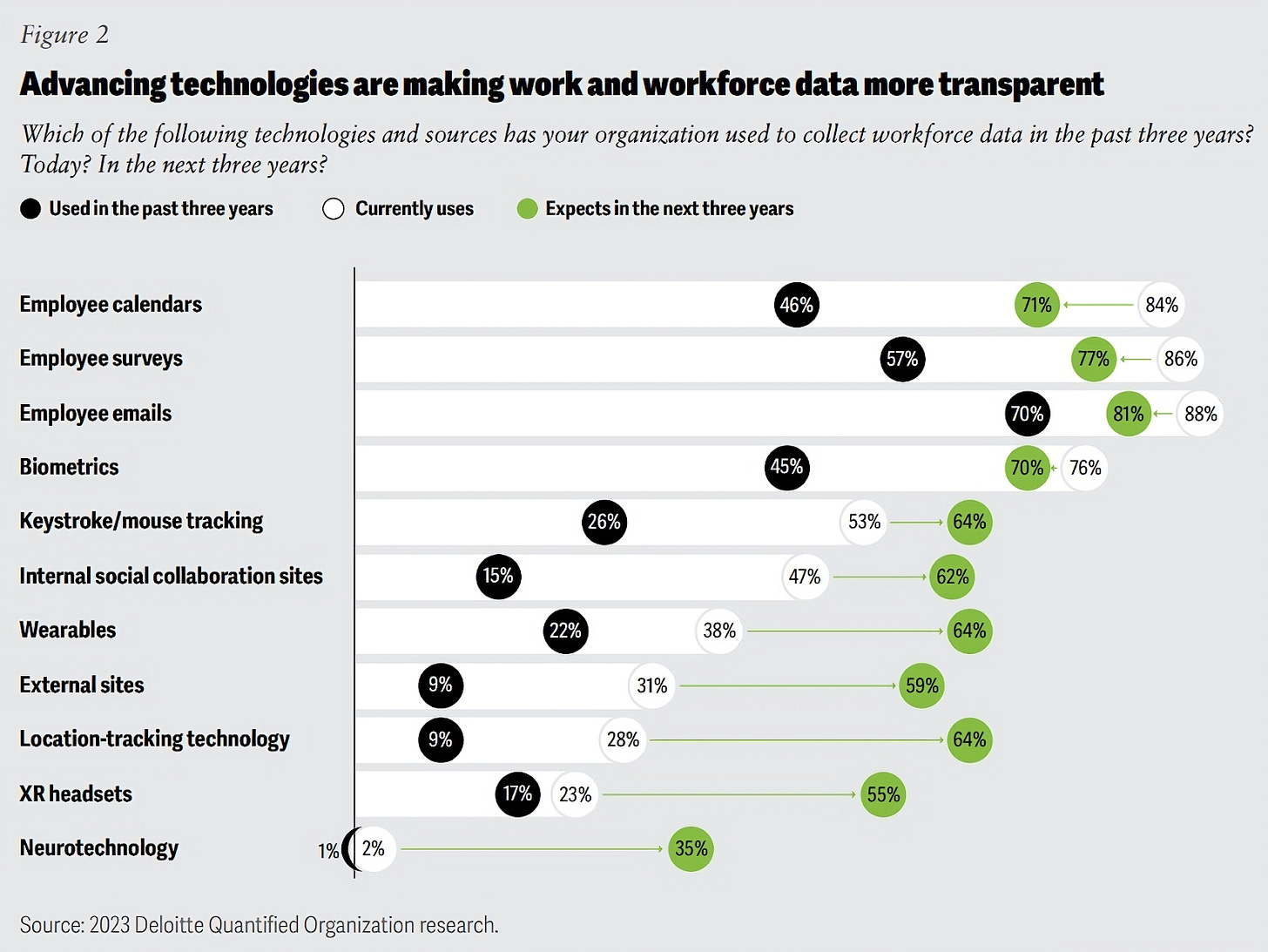
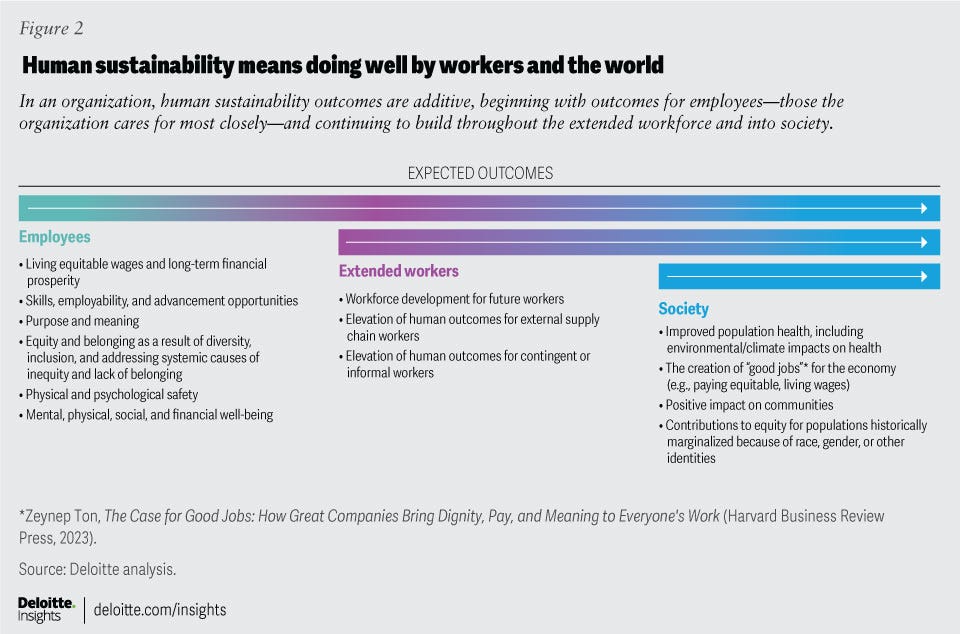
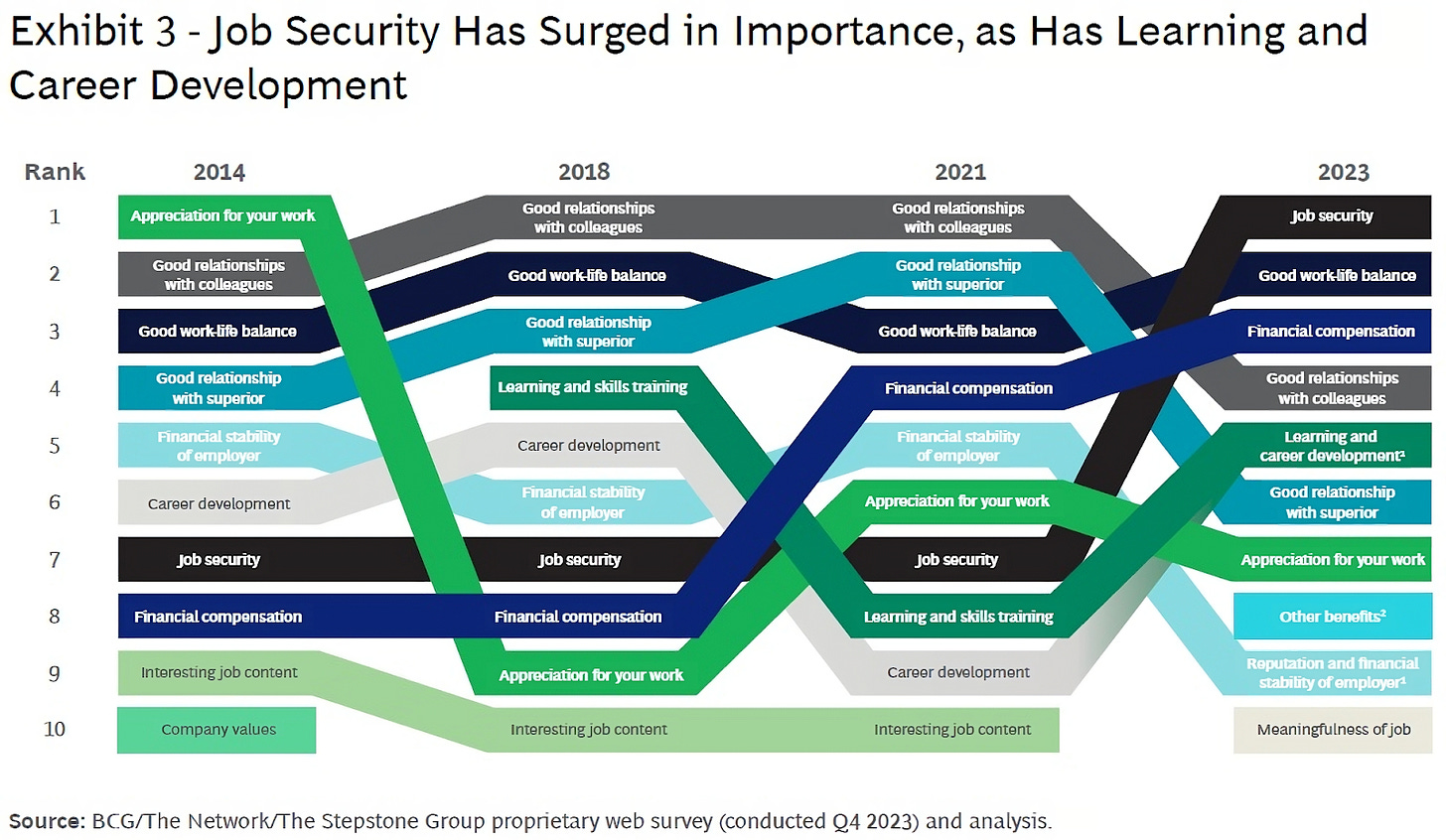
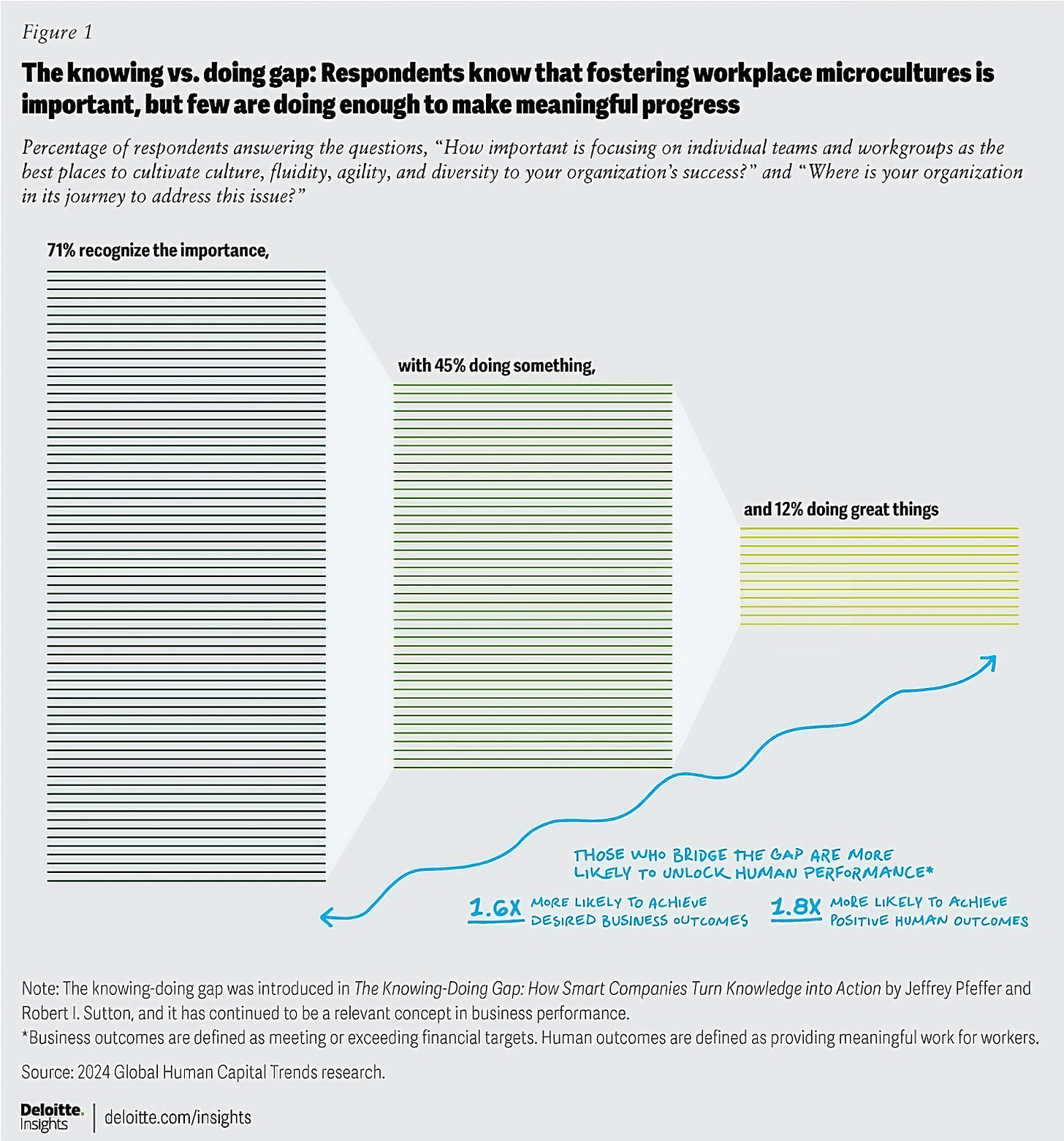
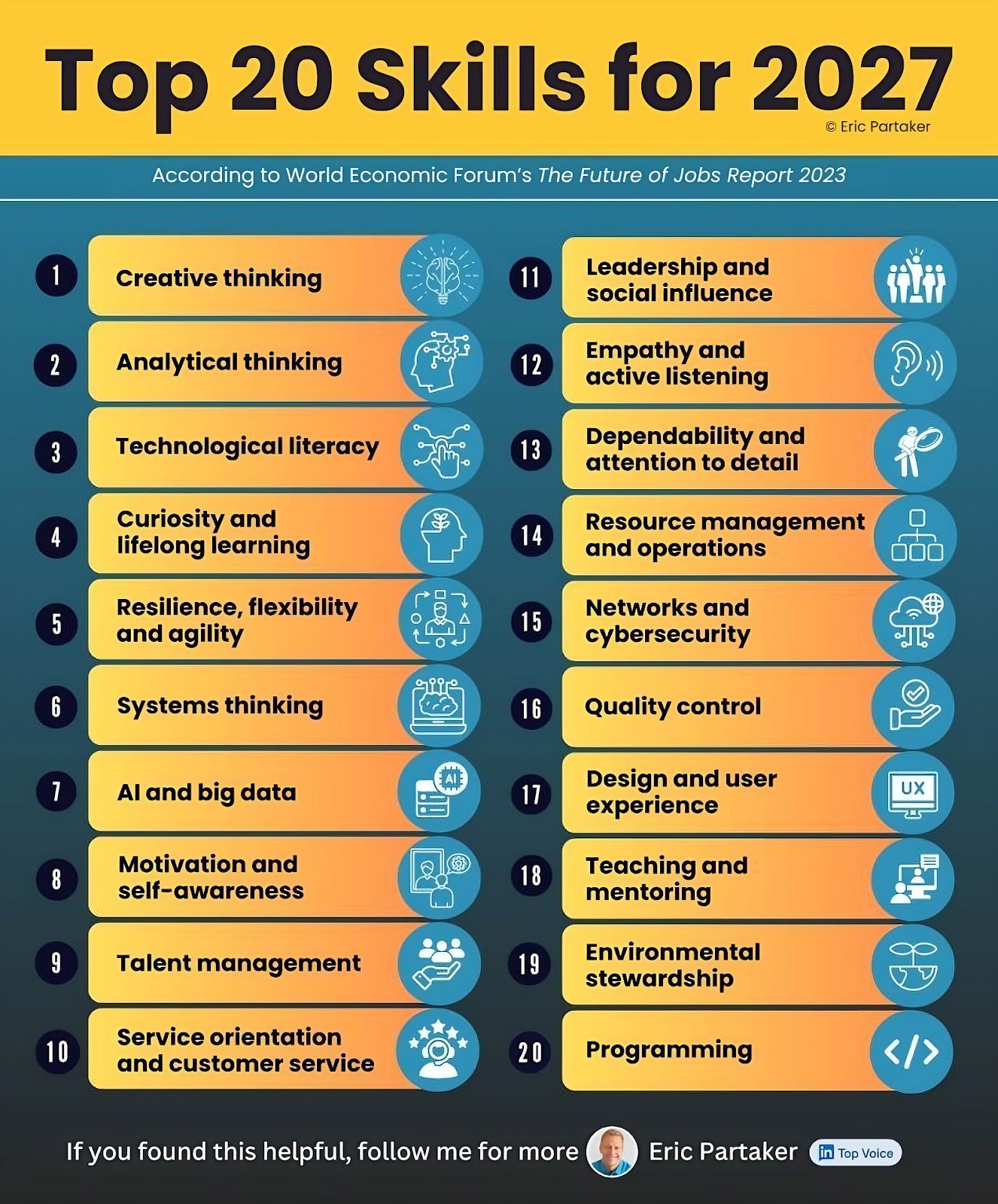
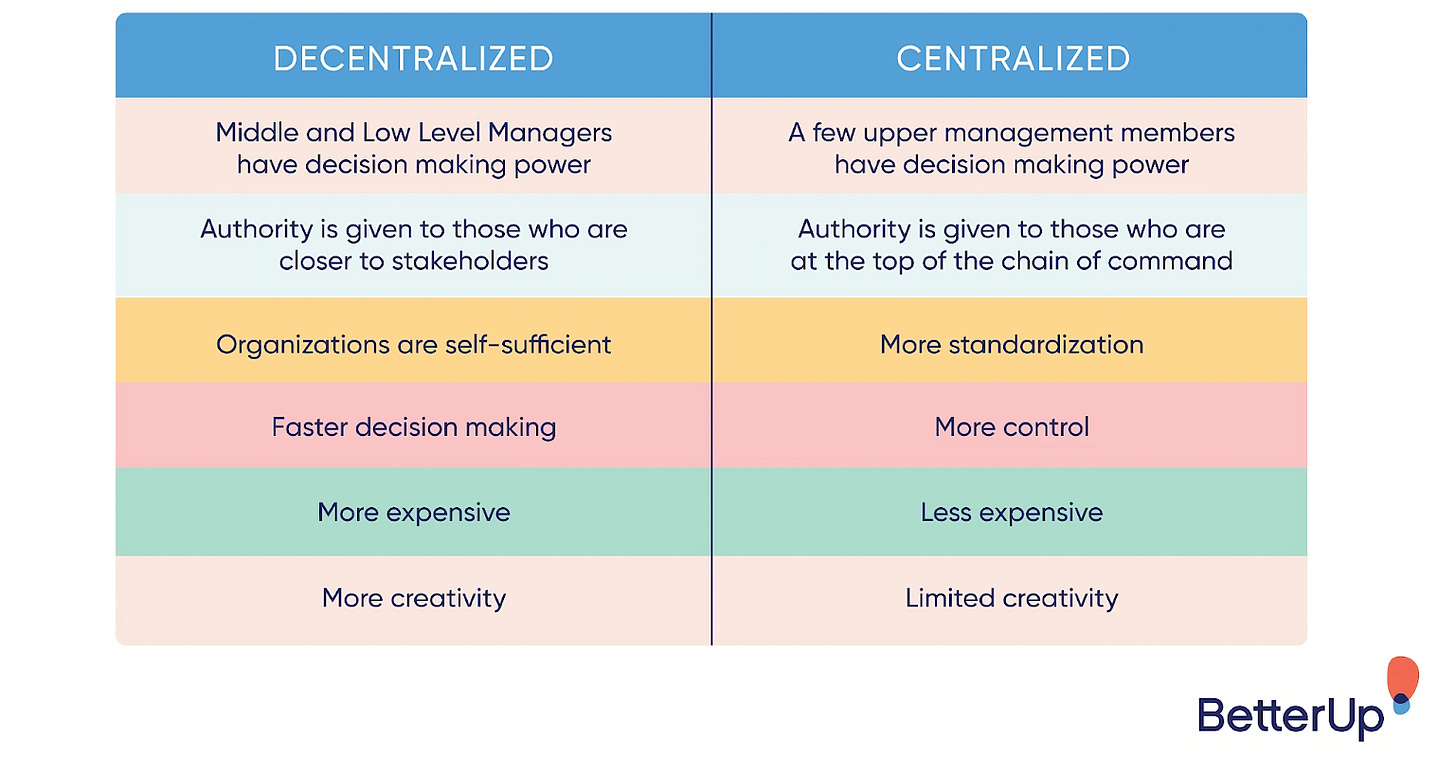
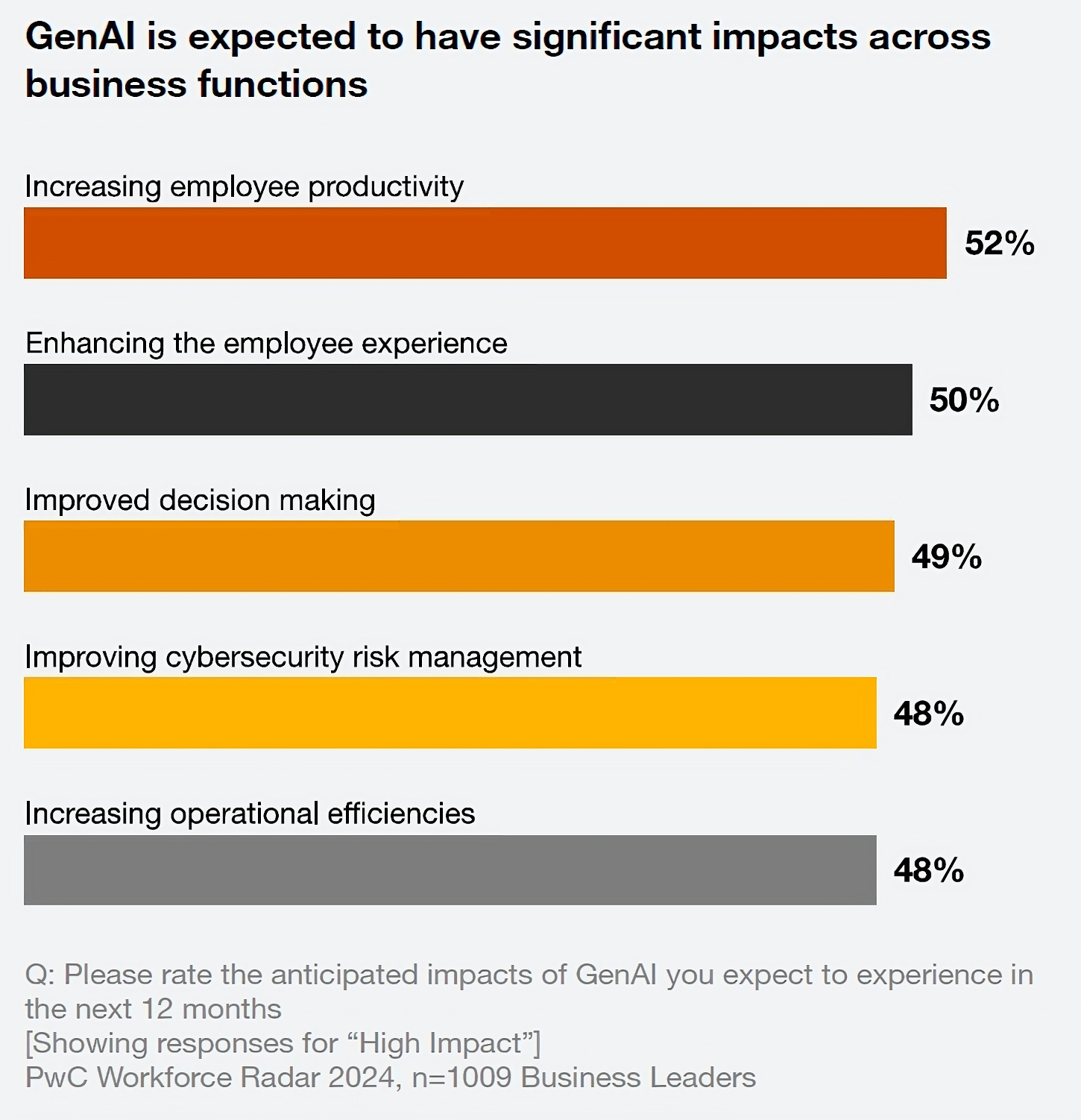
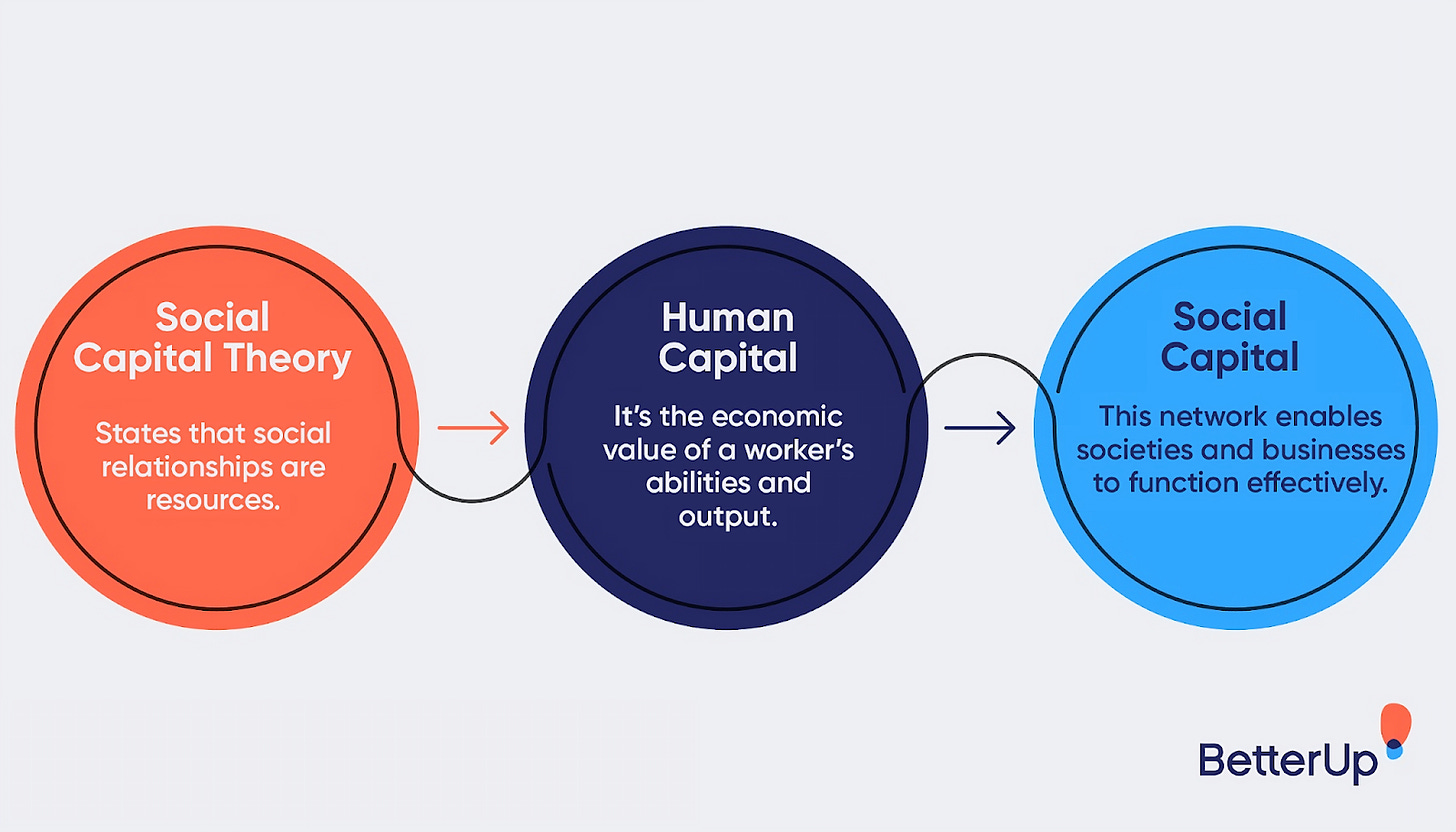
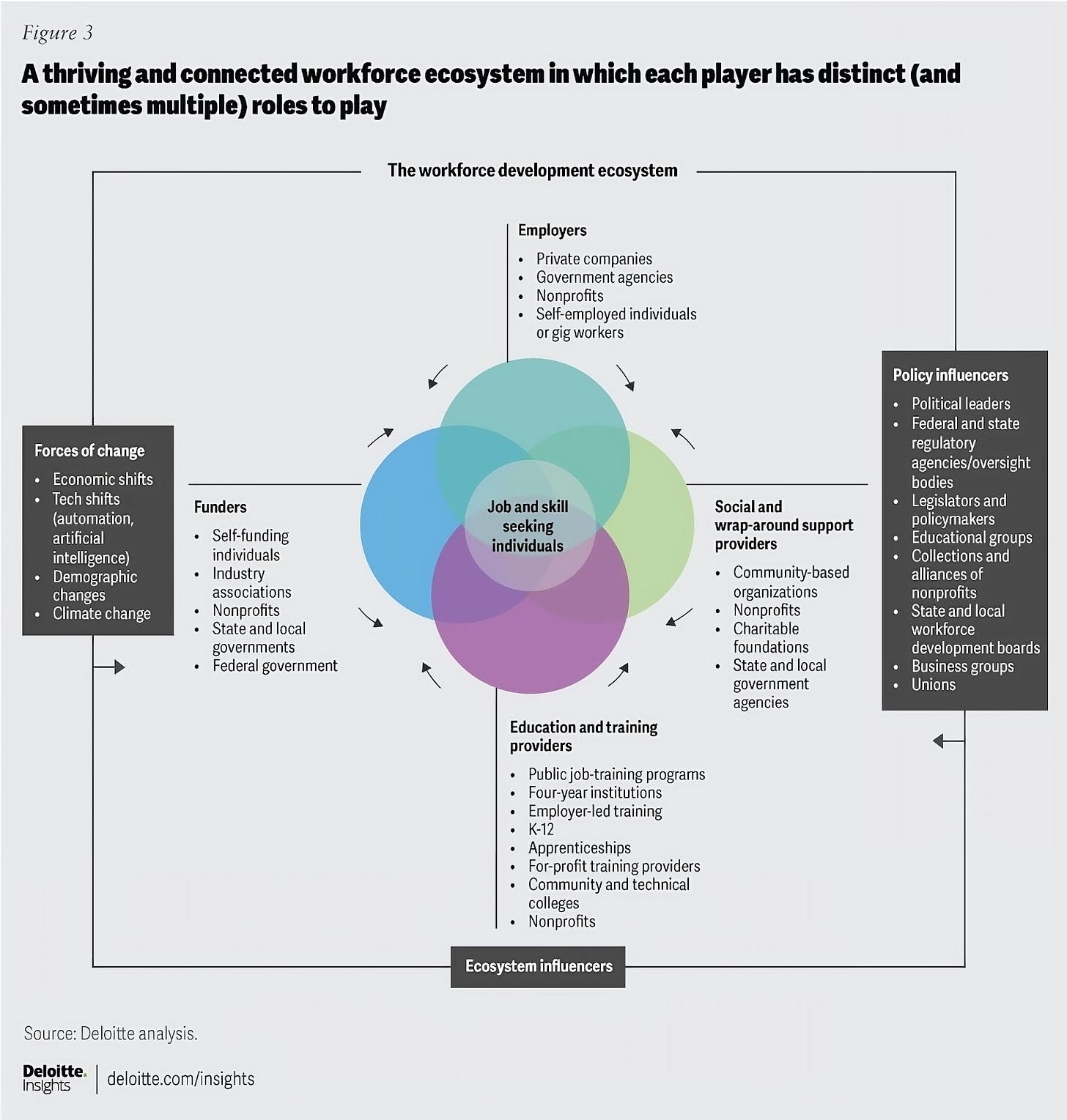
Wow! A very strenuous work to unpack and summarize the important conclusions and perceptions taken from these 50 Reports. A fantastic job, Alina. Amazing.
I will dive into it. My first reading has made me take some notes and keep my reactions for further development. And I did resonate strongly with what you have brought to your readers.
Thanks for the valuable dedication making this very enriched post.